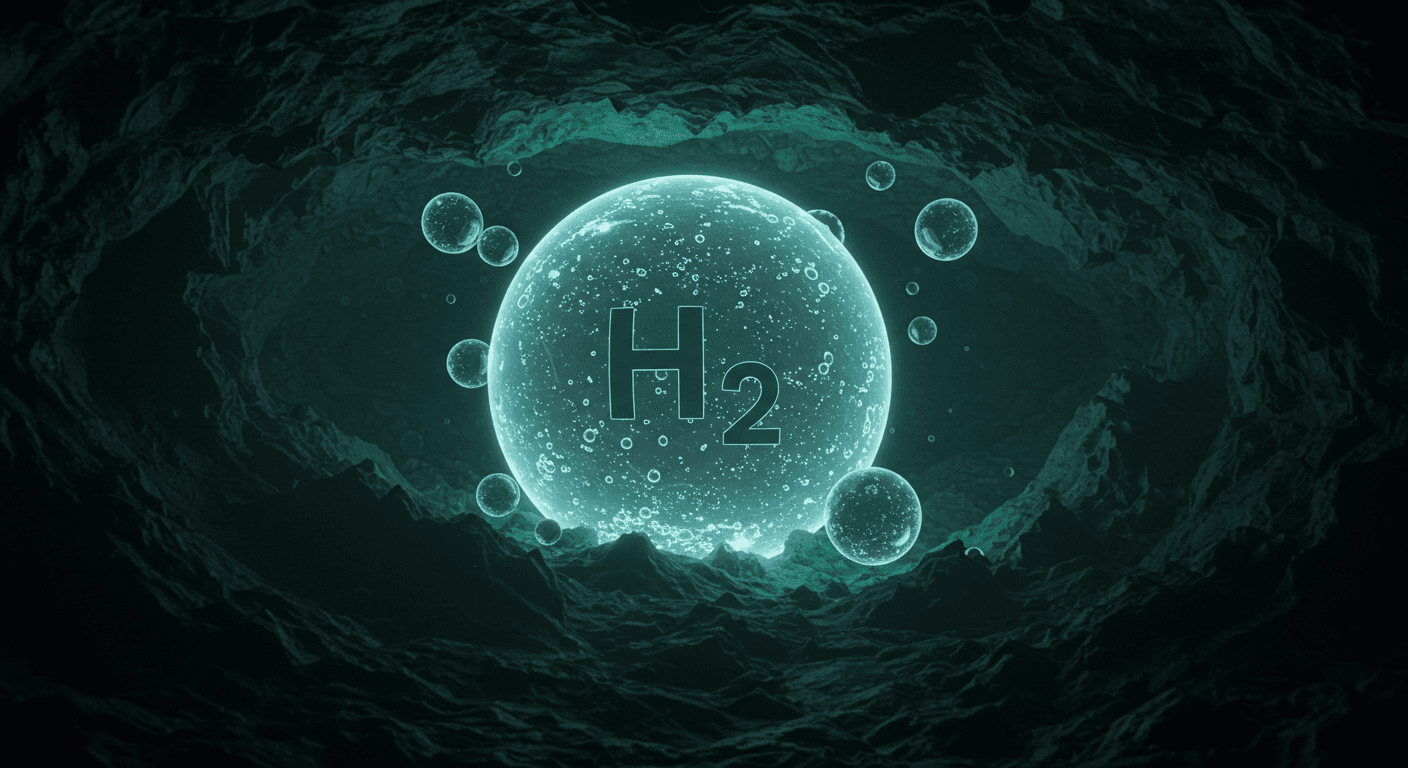The Quest for Subsurface Hydrogen
The search for clean energy alternatives is driving researchers to explore unconventional sources, and geologic hydrogen is gaining attention as a potential game-changer. Unlike green hydrogen produced from water electrolysis using renewable energy, geologic hydrogen occurs naturally within the Earth’s subsurface. However, understanding the full extent of this resource remains a challenge. A recent study published in Science Advances has attempted to quantify the potential of this natural resource.
Modeling the Earth’s Hydrogen Potential

Researchers Geoffrey S. Ellis and Sarah E. Gelman developed a mass balance model combining existing knowledge of hydrogen occurrence and behavior with geological data. This model estimates the potential of in-place geologic hydrogen, considering generation, migration, accumulation, and preservation processes within the subsurface. The stochastic model results suggest a wide range of potential resources, spanning from 10^3 to 10^10 million metric tons (Mt), with a most probable value of ~5.6 × 10^6 Mt.
A Fraction of this Resource Could Power the Future
While the majority of this hydrogen is considered unrecoverable, extracting a small fraction could meet a substantial portion of future energy demands. For instance, extracting just 1 × 10^5 Mt of hydrogen would be enough to reach net-zero carbon emissions for about 200 years. This quantity of hydrogen would contain an estimated energy of ~1.4 × 10^16 MJ, exceeding all proven natural gas reserves, which contain roughly ~8.4 × 10^15 MJ.
The Journey of Subsurface Hydrogen
The model considers several factors that influence the subsurface hydrogen resource potential:
- Annual generation: The Earth produces hydrogen through various geological processes, and published studies estimate that the yearly global production of natural hydrogen ranges from 15 to 31 million metric tons (Mt).
- Trapping: Hydrogen needs to be trapped in reservoirs for accumulation. The propensity for hydrogen to become trapped in the subsurface is a critical factor in determining the resource potential.
- Preservation: The accumulated hydrogen must be preserved within the subsurface. The amount of hydrogen that can be retained in the subsurface is affected by both biotic and abiotic factors.
- Consumption: Hydrogen is subject to various consumption processes, including biological and chemical reactions. The model factors in losses of hydrogen due to biotic and abiotic processes.
Flux of Hydrogen into the Atmosphere
The model’s calculations revealed that the annual flux of hydrogen from the subsurface into the atmosphere is between <1 to ~1 x 10^3 Mt year^-1, with the most probable value being ~24 Mt year^-1 (with a mean of ~50 Mt year^-1). The largest known source of natural hydrogen to the atmosphere are from volcanic and hydrothermal systems, with an estimated flux of ~9.6 ± 7.2 Mt year^-1. The model’s findings are consistent with published estimates of hydrogen flux to the atmosphere, with additional contributions potentially coming from terrestrial macro- and microseeps. However, soils are thought to consume ~75% of the natural flux. The quantity of hydrogen consumption in soils and its mechanisms are uncertain.
Implications for Future Hydrogen Use
The study’s findings suggest that geologic hydrogen could be a significant energy source, but several factors will influence the viability of this resource.
Challenges in Extraction and Viability
The model’s results are intended as an approximation of the potential in-place geologic hydrogen resource. The model does not account for the distribution of hydrogen in the subsurface, which is important for economic viability. It is likely that the majority of subsurface hydrogen may be too deep, too far offshore, or too small to be economically recovered.
Potential for Meeting Future Demand
If even a small fraction of the most probable in-place hydrogen is recoverable, it could be a significant resource. The global demand for hydrogen is projected to reach ~500 Mt year^-1 by 2050, and recovery of just 2% of the most probable in-place resource would be sufficient to meet the entire projected demand. The energy content of this recoverable hydrogen is estimated to be ~1.4 x 10^16 MJ, roughly twice the amount of energy found in all proven natural gas reserves on Earth.
Time to Develop Geologic Hydrogen Resources
The time required to develop geologic hydrogen resources is a major factor in its use. While the development of petroleum resources took over a century to mature, geologic hydrogen could be developed much more quickly. The experience of US shale gas resource development suggests that geologic hydrogen could make a major contribution to the global energy supply in the coming decades. The model projects that geologic hydrogen production could meet half of the projected supply of blue hydrogen by the end of this century.
Factors Affecting the Resource Potential
The study highlights the key factors that affect the geologic hydrogen resource potential:
- Residence Time: The time that hydrogen resides in reservoirs, particularly those associated with biological consumption, has the largest impact on the predicted geologic hydrogen resource potential.
- Natural Generation Rate: The second most important factor is the natural hydrogen generation rate.
- Consumption: The magnitude of consumption associated with migration and leakage from reservoirs have negligible effects on resource potential.
Research and Exploration
The study concludes that further research is needed to fully understand the potential of geologic hydrogen resources. It emphasizes the need to improve our understanding of the rates and controls on geologic hydrogen consumption within the subsurface and to obtain better estimates of natural hydrogen generation rates. Optimized methods for finding these resources are also crucial for realizing their full potential.
Natural Hydrogen as a Renewable Resource
The rate of hydrogen generation may be rapid enough for it to be economically extracted from subsurface fluxes without needing a reservoir, trap, or seal. It may also be possible to stimulate natural hydrogen production. The study suggests that slow extraction rates could increase the amount of renewable resource produced annually, but this would reduce its contribution to decarbonizing the energy supply. Further research is needed to evaluate the potential of this “renewable” component of subsurface hydrogen.
Methodological insights
The study has introduced a mathematical model, which serves as a starting point in understanding the magnitude of the potential in-place geologic hydrogen resource. The model inputs include annual hydrogen generation, hydrogen trapping and residence time in the subsurface, losses due to biotic and abiotic processes, and rates of human production. The model outputs are the amount of hydrogen stored in subsurface reservoirs and the flux of hydrogen into the atmosphere.
The study used Monte Carlo simulations to account for the uncertainties in the model parameters. The model calculations were performed using MATLAB, a programming language and environment often used in engineering and scientific computations.
The results of this research offer valuable insights into the potential of geologic hydrogen as a significant energy resource. Further research and exploration efforts are warranted to fully assess and utilize this resource, moving closer to a future with clean and sustainable energy.

